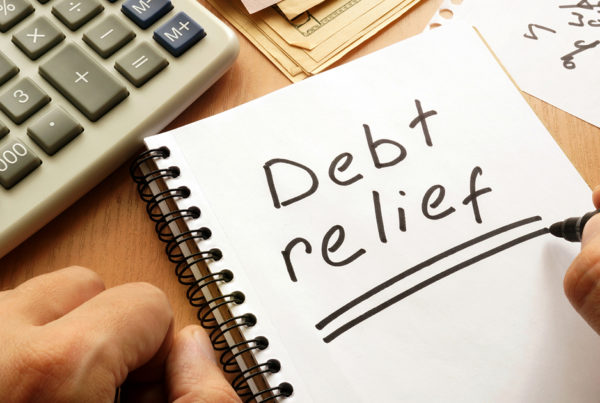There are many things people dream of. For some that’s going to college, buying a nice car, owning a home, starting a business and improving their quality of life by working hard (i.e the American Dream).
In 1950, you could purchase a new car for roughly $1,500, a gallon of gas for 18 cents and a home for around $8,500. The average annual income was around $3,200.
Flash forward to 2021, the cost of a new car is $45,000, a gallon of gas is $3.14, the average home in Wisconsin costs $229,900 and the average annual income is $66,569.
While some dreams may remain the same as 70 years ago, making them a reality has become much more difficult. This has led many to finance their dreams into reality, to the tune of an average debt of $92,727 per person in America.
What is debt
Debt is any amount of money—big or small—that you owe to someone else to cover the costs of something. It means you had an expense that was more than the amount of money you had available and you borrowed money from a friend or financial institution to cover the costs, you now are in debt.
Top causes of debt
While the math of how debt happens (spending more than you have) makes sense, we still carry a lot of it around (and it gets heavy!). The top cause of debt is spending more than we make. It seems simple, right? If you don’t have money for something, don’t buy it, but life is much more complicated than that. A few of the most common reasons people go into debt include:
- And typically, not the fun kind either. Whether it’s a fall that leads to a broken wrist (and the medical bills pile up), an unexpected car repair or another unplanned expense, surprise expenses mean tapping into savings, putting it on your credit card or taking out a loan.
- Change in employment. Whether permanent or temporary, the loss of income leads to debt as you try to keep up with daily living expenses.
- Relationship changes. When two incomes are combined, it means you have more to work with, but if you and your partner go your separate ways, it makes paying the bills tougher and can often increase debt in the form of separate mortgages, credit card bills, auto loan payments, etc.
- Not considering timing. If you look in your checking account, have money available and decide to buy something, you may have just used money that you needed for bills later in the month. Your current account balances may not be giving you the full picture. For example, if you buy something big (and something that isn’t a necessity) on the 8th of the month, you might not have enough money for a bill that’s automatically deducted from your account on the 10th of the month.
- Living on credit. Using your credit card is easy—maybe too easy. Whether you’re adding things to your cart during late-night phone-scrolling sessions or in the store, making credit card purchases makes it tougher to keep tabs on your spending because the limits are typically higher than the amount of cash you have on hand to pay off the account balance at the end of the month.
- Pursuing higher education in the form of a technical certificate or diploma, bachelor’s or master’s degree, professional training, medical school or another form of training can help you achieve your career goals, but it comes at a price.
- Living outside your means. While everyone has dreams, trying to live them out before you can financially support them means you’re carrying over debt from month to month.
How to get out of debt when you’re broke
If it feels like you are being buried under a mountain of debt, it may seem impossible to get out of debt. The truth is, it WILL take time, but it is possible to be debt-free. Here are a few tips to help you kick your debt to the curb:
- Budget: Having a budget is a big factor in reducing debt, as it helps you understand where your money is going. Setting up a budget will also show you what times of the month your expenses are higher, so you can keep that in mind as you are making purchases. Setting a budget can also help you identify if you are falling behind on bills and help you make a plan to stay on top of your finances. If you are unable to make payments for loans or credit cards you have with Verve, call us at 800.448.9228 to discuss your options.
- Emergency fund: Setting aside a little each month can help you have funds to tap into for a rainy day. Start by setting aside what you can (even a few dollars a week adds up quickly) and gradually increase it as you are able to do so. Aim to eventually have enough saved up to cover three to six months of living expenses.
- Prioritize debt repayment: Paying off your debt is important for a variety of reasons, one being that you will have more money freed up in your budget once you pay off your loans and credit cards. Another reason to pay off debt quickly is to reduce the amount you pay in interest, or what financial institutions charge to lend you the money. For example, if you take three years to pay off $5,000 in debt on your credit card at a 16.16% APR, you’ll pay $1,342 just in interest.
- Consolidate debt. If you have more than one credit card or loan, you could transfer all your loans to one financial institution and refinance them into one loan. This can help you secure a lower rate, meaning you’ll pay less in the long run, as well as give you one loan payment to remember. If you are interested in learning more about debt consolidation or are ready to get started, schedule a meeting with a Verve team member.
Ready to tackle your debt? Read our blog to learn more about ways to manage your debt or meet with a certified financial coach to make a plan to get out of debt.






 Federally Insured by NCUA |
Federally Insured by NCUA |  Equal Housing Opportunity |
Equal Housing Opportunity |